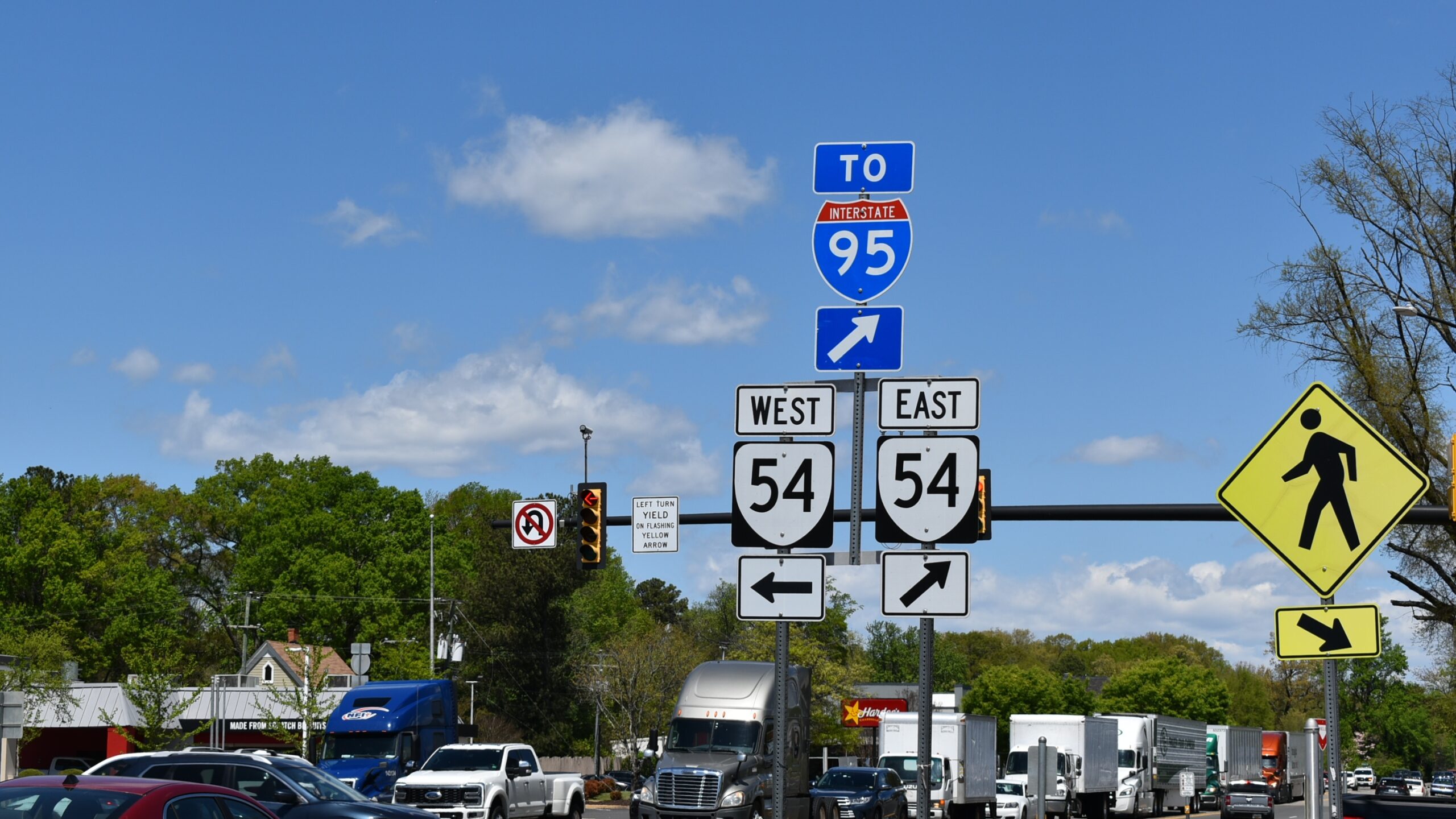
A request for $41.1 million to convert the I-95 and Route 54 interchange in Ashland to a diverging diamond design is among the recommendations for local projects to receive funding in the state’s Smart Scale program. (Jack Jacobs photo)
State officials have endorsed putting $338.5 million toward 14 local transportation projects that were among 65 submitted by Richmond-area governments and planning groups through the Smart Scale program.
The recommended area projects with the biggest funding requests included improvements to the I-95 interchanges in Ashland and Chester, and a project on Belt Boulevard to support a new GRTC Pulse rapid-transit bus line.
If approved, the Smart Scale funds would cover the bulk of the 14 projects, though additional funding sources would be needed to fully fund them.
Ashland requested $41.1 million for a project to reconfigure the I-95 interchange with Route 54 into a diverging diamond configuration. A diverging diamond features travel lanes that temporarily cross sides with the intention to better facilitate traffic flow. The design requires fewer signal changes and facilitates pedestrian and bicycle crossings.
The project at Exit 92A would also feature work on the interchange’s bridge, two new signals for the diverging-diamond crossovers that would be built on Route 54 (England Street to the west and Patrick Henry Road to the east), and additional pedestrian and bicycle infrastructure.
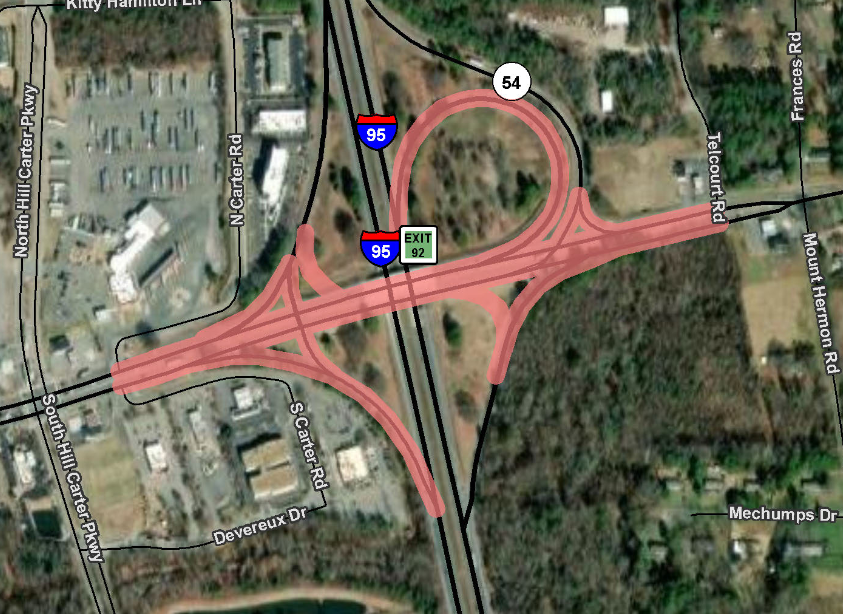
The I-95 interchange with Route 54 in Ashland would be converted to a diverging diamond traffic pattern. (Courtesy OIPI)
In Richmond, $31.4 million is recommended to revamp a 0.6-mile stretch of East Belt Boulevard between Midlothian Turnpike and Hull Street Road. The section’s curbside lanes in both directions are proposed to be converted to dedicated bus-only lanes.
The Belt Boulevard project would also feature a 10-foot shared-use path on the south side of the road and a sidewalk on the north side. Dedicated turn lanes and a raised median also are planned.
The Belt Boulevard project would help support GRTC’s plans to build a north-south extension of the Pulse line, said Myles Busching, director of transportation at PlanRVA, an organization that coordinates regional development.
“It’s getting the infrastructure on the streets ready, getting those transit lanes ready, so that as we develop the full Pulse for the north-south route we’ll have the infrastructure in place,” Busching said.
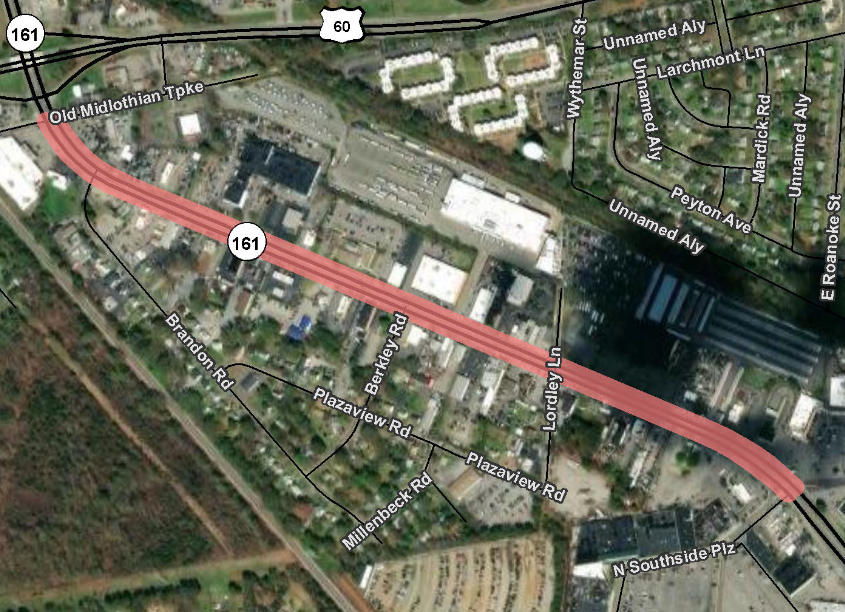
Dedicated bus lanes would be part of a project on East Belt Boulevard proposed to be mostly covered by Smart Scale funding. (Courtesy OIPI)
Also recommended for funding is $30.5 million for improvements to I-95’s interchange with Route 10 in Chester, which rounds out the top three Richmond-area projects by funding amounts requested.
The Chester project would turn the interchange into a partial cloverleaf by removing the loop ramps for I-95 northbound to Route 10 westbound and for I-95 southbound to Route 10 eastbound. Signals would be added at the ends of the interstate’s alternate northbound and southbound off-ramps where they intersect with Route 10. New turn lanes and widening for the off-ramps are also planned.
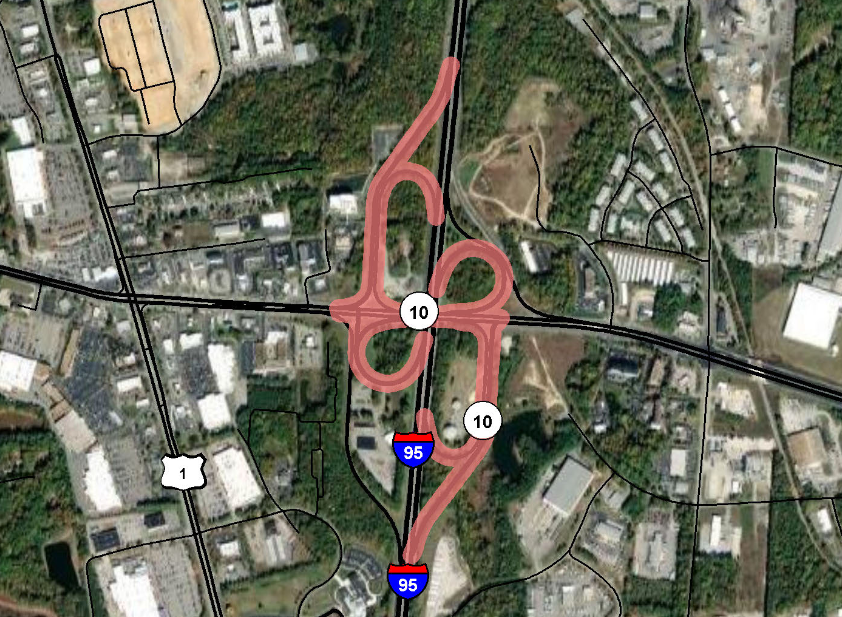
Smart Scale funding would convert the I-95 and Route 10 interchange into a partial cloverleaf. (Courtesy OIPI)
New 1,300-foot acceleration lanes also would be added on I-95 southbound and northbound, as well as sidewalks on Route 10.
The Chester project was requested, as was the Belt Boulevard project, by the Richmond Transportation Planning Organization, which is a program of PlanRVA.
Also on the local Smart Scale shortlist are a pair of projects to improve Route 288 in eastern Goochland.
Officials recommended $22.5 million for improvements to the Route 288 and Route 250 interchange. The project would include widening the eastbound off-ramps from 288 to West Broad Street, and widening Broad from Wilkes Ridge Parkway to Bon Secours Parkway. Sidewalk improvements and traffic signal modifications would also be made.
Goochland also requested $14.4 million to partially fund a new southbound auxiliary lane on 288 between Broad Street Road and Tuckahoe Creek Parkway.
Busching said the Goochland projects had been unsuccessful in securing Smart Scale support in past years and would improve connectivity in the Short Pump area.
“Those two projects are pretty big and potentially transformative,” Busching said. “They are part of a broader project for the Short Pump area. Just improving access to Short Pump in general, including eventually an interchange at North Gayton Road.”
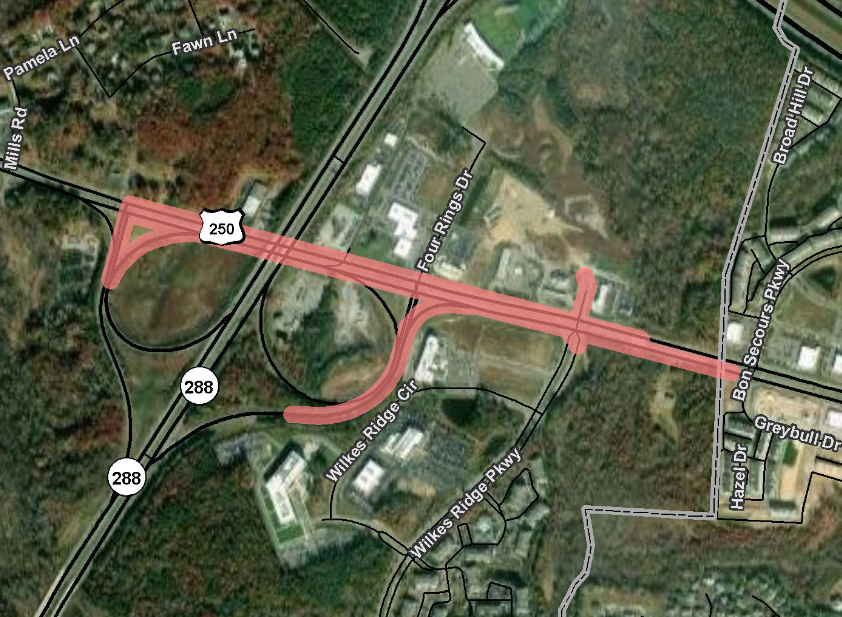
State officials have recommended funding for a project that would modify the Route 288 and Route 250 interchange in Goochland. (Courtesy OIPI)
Other local projects recommended for Smart Scale funding are $27 million in improvements to the I-64 and Mechanicsville Turnpike interchange on the Richmond-Henrico line; $25.1 million for a shared-use path and pedestrian crossings on Mechanicsville Turnpike from the city limits to Laburnum Avenue in Henrico; and $10.2 million for improvements to the intersection of West Broad and Glenside Drive in Henrico.
The Smart Scale program includes the Tri-Cities area as part of the Richmond district. Funding requests there include $46 million for improvements to the I-95 interchange with I-85 in Petersburg and $42.7 million for bike lanes, sidewalks and other improvements in the Winston Churchill Drive corridor in Hopewell between Terrace Avenue and High Street.
Smart Scale was created in 2016 and is now in its sixth round. Projects are scored on their impacts on things like congestion reduction, economic development and safety.
The Richmond region is recommended for a higher level of funding than Northern Virginia and Hampton Roads in the latest funding round, which Chet Parsons, executive director of the Central Virginia Transportation Authority, said was a first. He said contributing factors to the Richmond region’s showing in this round were its increasing population and economic growth, and its ability to coordinate competitive proposals.
CVTA, a local transportation funding group established in 2020, allocated additional funding toward projects seeking Smart Scale funds, which Parsons said allowed governments requesting them to make smaller and more attractive requests of the state program. Nearly all of the 14 Richmond district projects would be mostly covered by the Smart Scale funding if awarded, with other funding sources making up the difference.
“CVTA’s funding is used to put a lot of the Smart Scale applications in a better position. Because of CVTA funding, they can ask for less money,” Parsons said.
The recommended regional projects are among 53 recommended for funding across the state that would total more than $1 billion. The projects were recommended for approval by the Office of Intermodal Planning and Investment, which is made up of representatives from VDOT and the Virginia Department of Rail and Public Transportation.
The program is largely powered by state money, though there are federal dollars involved as well, said Brooke Jackson, Smart Scale’s program manager. She said last week the program wasn’t anticipating any major disruptions as a result of the Trump administration’s moves in recent months to reevaluate federal support for infrastructure spending.
The Smart Scale team presented its recommendations earlier this year to the Commonwealth Transportation Board, a governor-appointed board that oversees transportation funding and statewide planning.
Community meetings on the recommendations kick off this week across the state. A Richmond District meeting is scheduled Tuesday, April 22, at the Richmond District Hawthorne Auditorium at 2430 Pine Forest Drive in Colonial Heights. Additional meetings and more details can be found here.
The meetings will be used to inform an updated list to come before the CTB in May. The CTB is slated to approve the latest round of Smart Scale projects in June.






